THE first result of the experience gained with the Do. C. I was the construction of the next flying boat in the series, the Do. Rs. IV, which had this feature in common with the land machine that its fuselage was braced by the metal covering only. (This machine was described and illustrated in FLIGHT of September 18, 1919.) As the illustrations will show, the Rs. IV is a monoplane flying boat with four engines placed between the boat hull and the monoplane wing. The four engines were 270 h.p. Maybachs, and drove tractor and pusher screws respectively. A feature claimed for this engine arrangement is that it is possible to attend to the engines during flight, while the fact that they are close together results in very small yawing moments when one engine cuts out. In general arrangement the Rs. IV, follows the lines of the Rs. 111. even to the fuselage above the wing As already mentioned, however, the fuselage was braced by the metal covering, which was not the case in the Rs. III. The wing is braced above and below by cables, but it will be noticed that the Rs. IV has king posts on top, while the Rs. Ill had plain top bracing. The span in both cases was the same. It might be mentioned that at the same time as the building of the Rs. IV, work was progressing at Lindau on the development of metal floats for seaplanes, and such good results -were obtained that in the latest Dornier machines metal floats are employed exclusively, with, it is claimed, excellent results. One of the first machines to be fitted with these metal floats was

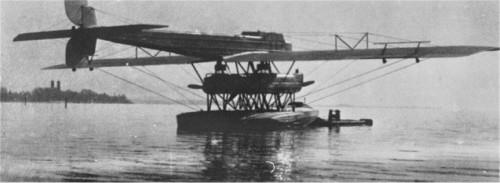
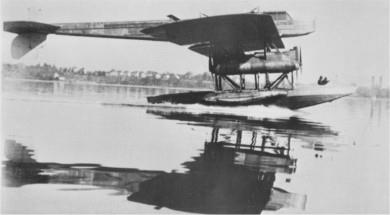

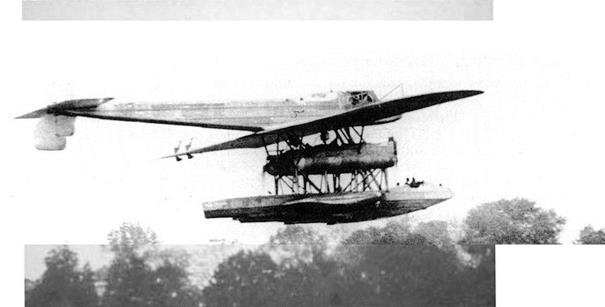
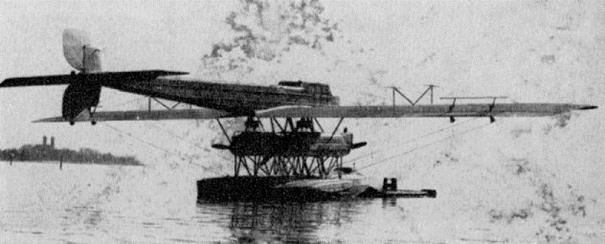
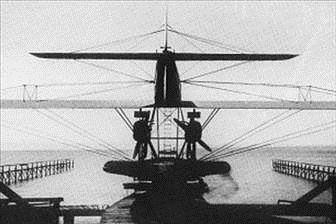
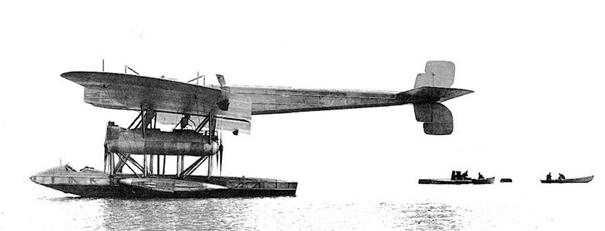
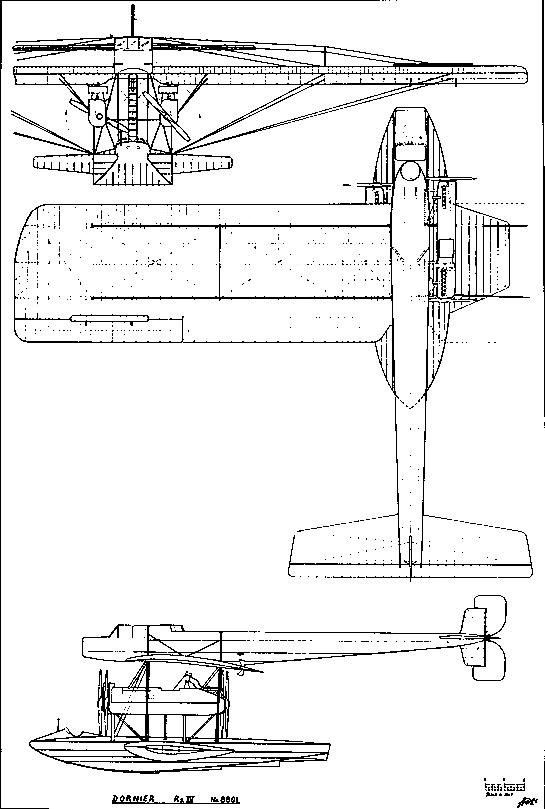
| Type |
Military flying boat rebuilt for passenger carrying |
| Engine |
4 Maybach Mb IVa |
| Dimensions |
Length 22.78 m, height 8.4 m, span 37.00 m, wing area 226 m2, width of hull 3.7 m, length of hull 14.2 m |
| Weights |
Empty 7235 kg, flying weight 10600 kg |
| Performance |
Max. speed138 km/h, landing speed 80 km/h, service ceiling ~2000 m, endurance ~10 h |
| Type |
Werk.Nr |
Registration |
History |
|
8801 |
|
First flight 12/10 1918, tested during 1918. After the end of WW I it was rebuilt with a cabin for 6 passengers. Used for flights at the Bodensee. Scrapped in autumn 1920 because of the ban of flying from the allied. |
|
8802 |
|
Not finished. Scrapped in 1919 because of the ban of flying from the allied. |











